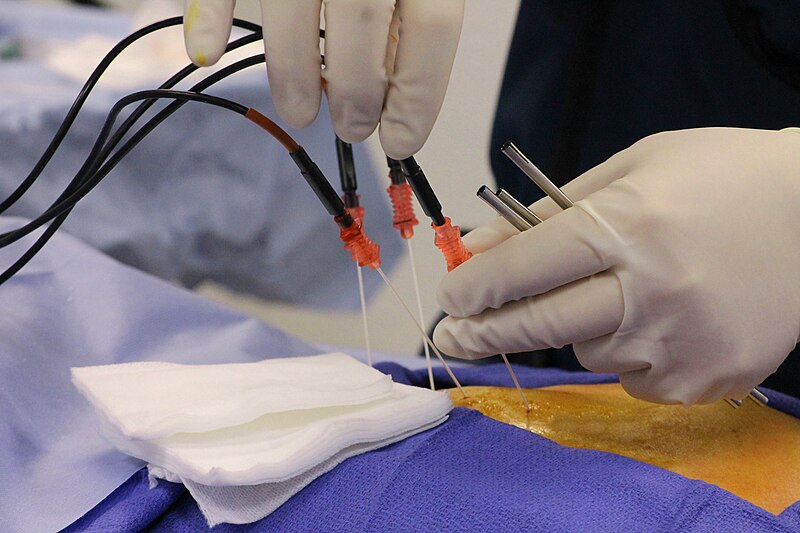
Radiosurgery uses a gamma knife, which is a tool that generates radiation, to attack a tumor. This treatment is characterized by a very high dose of radiation targeting a precise area. A linear accelerator or a proton beam can also be used to administer radiation.
What is it?
Radiosurgery is a nontraditional surgery, given that no incision is made. Precisely focused radiation beams target an area of the body, damaging the DNA of those targeted cells. This method impedes a cell’s ability to reproduce, resulting in a decrease in size. The practical application of radiosurgery is to destroy tumors. When targeting brain tumors, radiosurgery is often referred to as stereotactic radiosurgery, and when the procedure is targeted elsewhere, it is stereotactic body radiotherapy (SBRT) or stereotactic ablative radiotherapy (SABR).
What should I do to prepare?
The doctor will take a series of imaging scans to accurately determine the size and location of the tumor. Before beginning the procedure, the doctor may ask if any medications are currently being taken, so the patient should be prepared to provide this information. Additionally, the doctor may request that the patient refrains from eating or drinking prior to receiving the procedure.
What happens during the process?
Radiosurgery is an outpatient procedure, but could last for the duration of the day. The patient receives an IV to control hydration throughout the duration of the procedure. The patient’s head will be placed and secured in a frame for stability and to provide reference points for the radiation. The physician will then use CT or MRI scans to locate the tumor precisely. The medical team will then spend several hours planning the radiation doses according to the results of the scans. The patient then rests on the gamma knife bed and undergoes radiation treatment for several hours. Mild sedative agents may be adminstered, but typically the patient remains awake. This procedure is free from pain and the patient has the capability to communicate with doctors using a microphone in the machine.
What are the risks and potential complications?
Because radiosurgery is not a traditional surgery, it does not have many of the associated risks of surgery, such as:
- Bleeding
- Infection
- Fatigue
- Swelling
- Scalp or hair problems
Disclaimer:
All GlobeHealer Site content, including graphics, images, logos, and text, among other materials on the site are only for education purposes. This content is not intended to be a substitute for professional medical advice, and you should always contact your physician or qualified health provider for information regarding your health. Information on this site regarding the overview, diagnosis, and treatment of any kind should be looked at, in addition to the advice and information of your health care professional. Do not disregard medical advice or delay seeking treatment or medical advice due to information found on the GlobeHealer site.
If there is even the possibility that you may have a medical emergency, seek treatment, call your doctor, or call your local emergency telephone number immediately. GlobeHealer does not endorse being the first line of communication in case of emergency and does not endorse any specific test, physician, facility, product, procedure, opinion, or other information that is or may be mentioned on this site or affiliated entities. Reliance of any and all information provided by GlobeHealer, its employees, affiliations, others appearing on the Site under the invitation of GlobeHealer, or visitors of the site is solely at your own risk and is not the responsibility of GlobeHealer.
Image Source: https://commons.wikimedia.org/wiki/File:Pain-Doctor-Radiofrequency-Ablation-Procedure-7_copy.jpg
